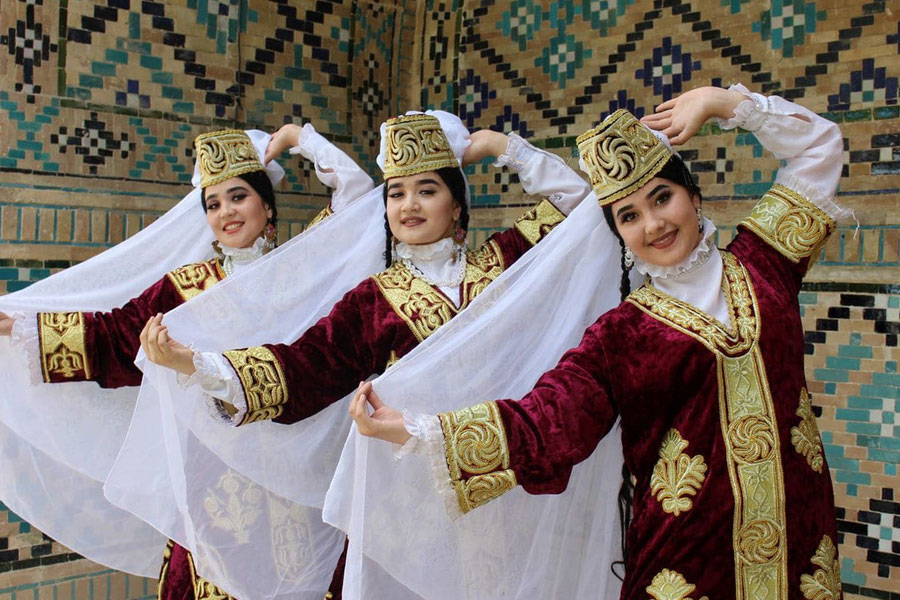
Bright costumes, expressive faces, and graceful movements rich with hidden meaning. Uzbek dance captivates with its oriental elegance, the performers’ beauty, and the emotional depth and fluidity of the choreography. This ancient art has evolved over thousands of years, from ritualistic and magical dances to modern stage performances, developing a wide range of styles, forms, and narrative structures along the way.
History of Uzbek Dance
The history of dance in Uzbekistan traces back to ancient times, beginning in the Paleolithic era. Over 12,000 years ago, tribal communities performed ritual dances to ensure successful hunting. These early magical dances are depicted in the rock petroglyphs of Zarautsay (Surkhandarya), alongside hunting scenes.
Archaeologists have also discovered ancient dance imagery on the walls of Toprak-Kala (1st–6th centuries AD), one of the ancient capitals of Khorezm, located in present-day Karakalpakstan. Scholars and UNESCO experts note a striking resemblance between these images and Lazgi, one of the most popular Uzbek dances, suggesting that its history spans more than 1,500 years.
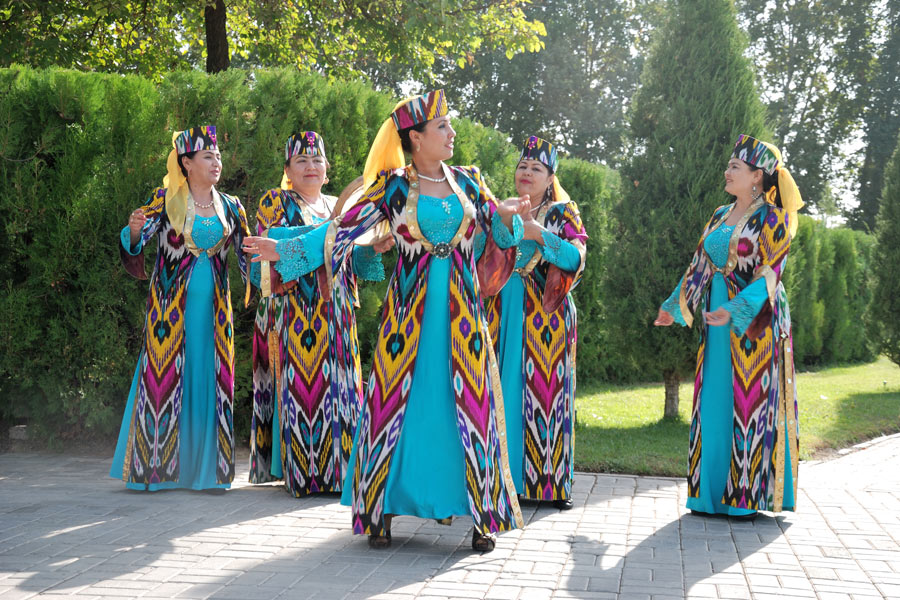
In the early centuries AD, many dances were closely linked to Zoroastrian beliefs, particularly the worship of the sun and fire. After the Arab conquest in the 8th century, Islamic influence reshaped the development of dance. A key role was played by Sufism, a mystical tradition that emphasized spiritual purification. Sufi rituals, known as zikrs, often included chant and dance as part of devotional practice.
The whirling movements of Sufi dervishes, performed to music, were famously captured by the 15th-century artist Kamaleddin Behzad (1455–1535) in his miniature Dancing Dervishes, now housed in the Metropolitan Museum of Art in New York.
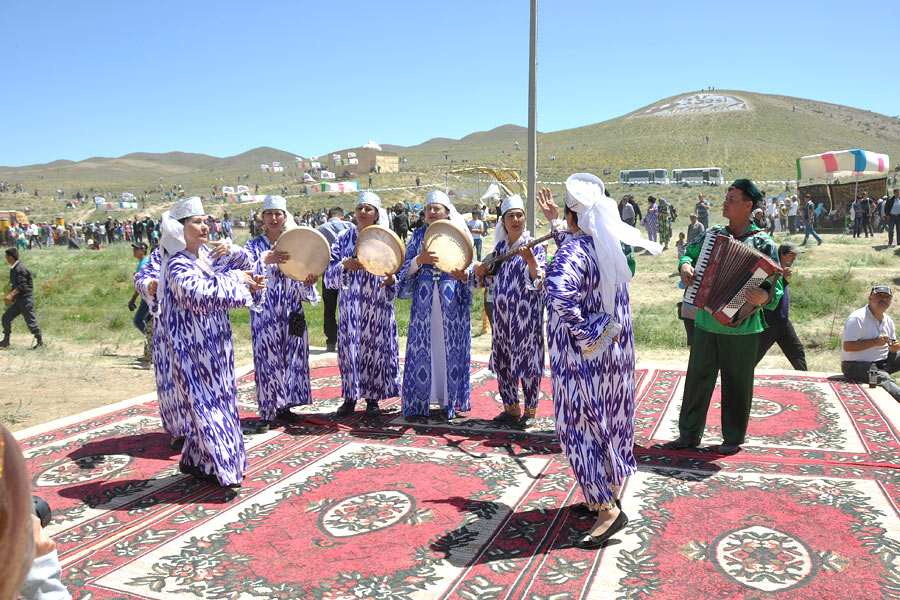
Another important cultural influence on Uzbek dance came from traditional gender norms in the Islamic Middle Ages. Women lived in separate quarters known as the ichkari, where dance was practiced in private and not shown to outsiders. The dancer’s appearance was also strictly regulated: costumes were modest, and the gaze had to be lowered.
Public dance performances by women remained taboo in Uzbek society well into the 20th century. This changed largely thanks to the pioneering efforts of Tamara Khanum (1906–1991), a legendary dancer who challenged societal norms and brought Uzbek dance to international stages. She performed in France, England, Italy, Poland, Iran, Turkey, and other countries across Europe and Asia, winning widespread acclaim. Among her admirers, it is said, was Isadora Duncan, who was captivated by Tamara Khanum’s art. Her life, work, and costume collection are preserved in the Tamara Khanum Museum in Tashkent.
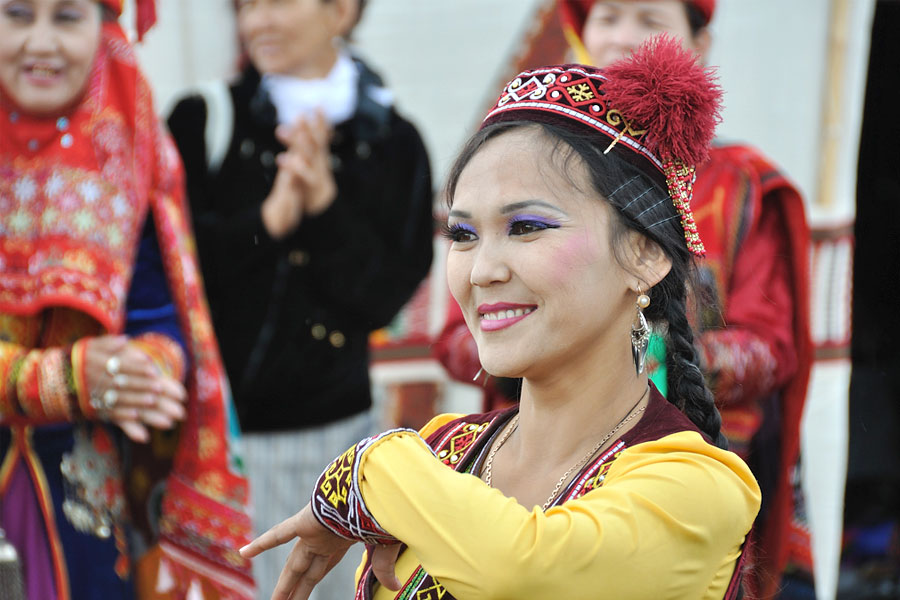
Tamara Khanum also trained a new generation of dancers who helped transform attitudes toward women’s dance in Uzbekistan. Among them was Mukarram Turgunbaeva (1913–1976), a celebrated performer and founder of the Uzbek dance ensemble Bahor, a name now carried by Uzbekistan’s most prestigious competition for young national dancers. Turgunbaeva made major contributions to the development of classical Uzbek dance, staging popular pieces such as Tanovar and Munojot.
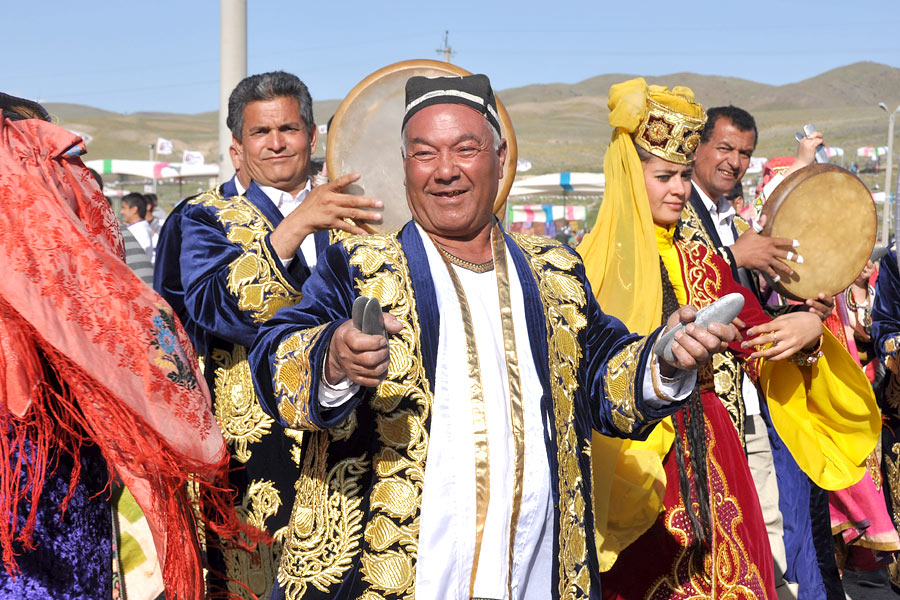
Their legacy continued in the 20th century through dancers such as Galia Izmailova (1923–2010), Razia Karimova (1916–2011), and Gulnora Mavaeva (1931–2025). Today, their heritage is preserved and expanded by Uzbekistan’s modern choreographic schools. Leading ensembles include the revived Bahor (relaunched in 2020) and national dance groups such as Sabo, Tumor, and others.
Uzbek dances remain a vital part of public life, performed at nearly every major event across the country. Various regional styles are showcased at major festivals including Sharq Taronalari in Samarkand, Silk and Spices in Bukhara, Boysun Bahori, and the newer Tandir Fest in Surkhandarya. Dance also takes center stage at dedicated events such as the Lazgi International Dance Festival, held every two years in late April in Khiva.
Varieties of Uzbek Dances
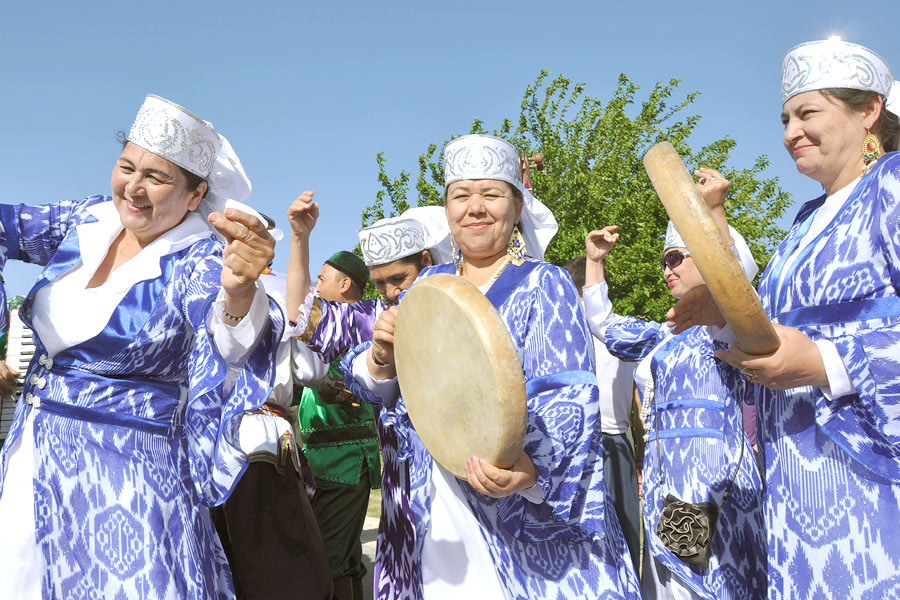
From the 16th to the 19th centuries, the territory of modern Uzbekistan was divided among three khanates: Khiva, Kokand, and Bukhara (which became known as the Emirate of Bukhara after 1785). Each khanate had its own government, way of life, and local cultural traditions. Over time, these differences gave rise to three distinct schools of classical Uzbek dance: Khorezm, Fergana, and Bukhara.
Fergana Dance
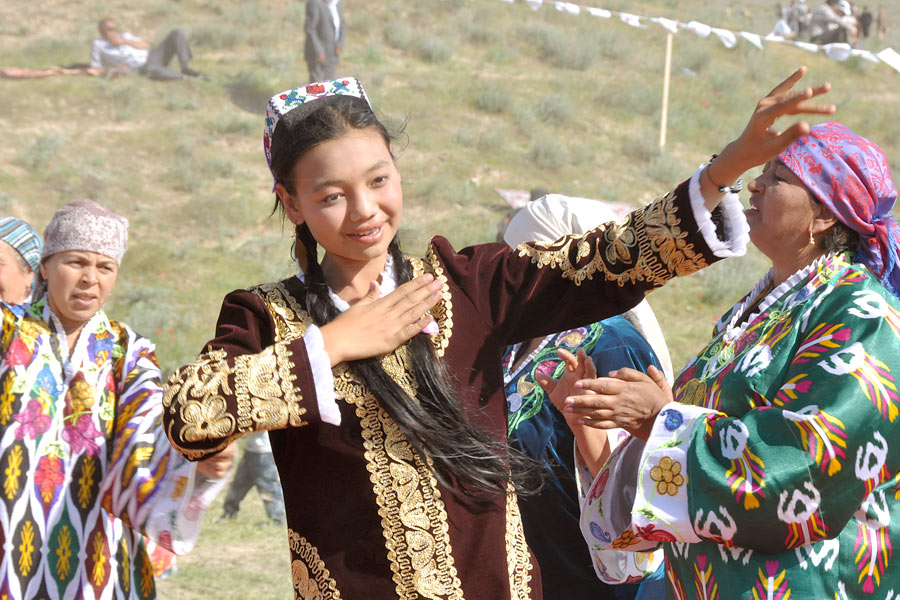
The dance of the Fergana Valley is among the most graceful and expressive forms of Uzbek choreography. It is known for its smooth, flowing movements; lyrical and romantic themes; rich facial expressiveness; and intricate hand and wrist gestures. Fergana dances are deeply symbolic. One of the oldest and best-known is Katta Uyin, which was traditionally performed for hours at a time, portraying the entire human life cycle - from birth to death.
Other notable examples include the performances of yallachi women, who traditionally combine singing and dancing, as well as more modern forms such as the Andijan Polka, which emerged in the early 20th century. Another iconic piece is Tanovar, choreographed by Mukarram Turgunbaeva to the melancholic melody of the same name.
Bukhara Dance
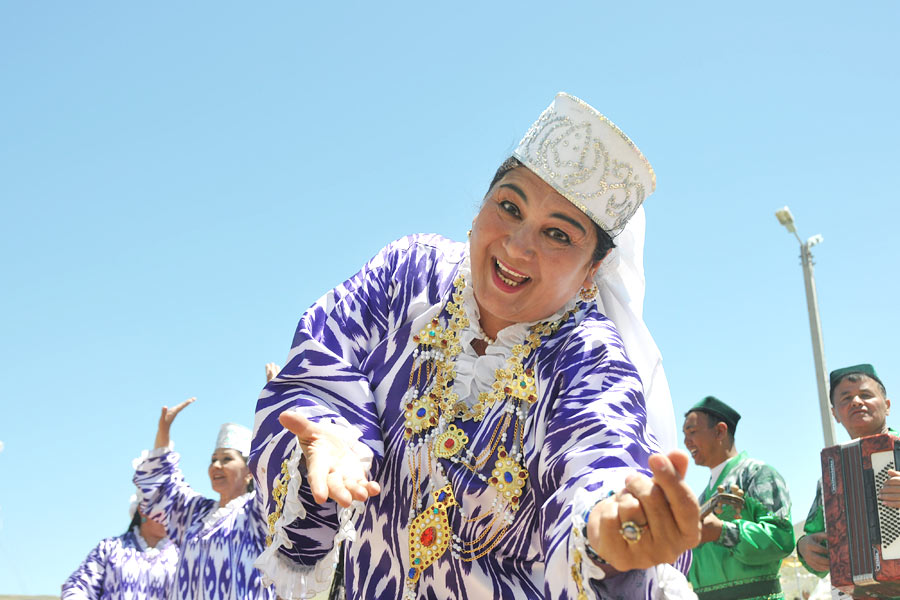
Bukhara dance is dynamic and passionate, characterized by expressive use of the arms and upper body, prominent rotational movements, and clearly defined, segmented gestures. Performers often play musical instruments during the dance, such as the kayrak (castanets) and zang (bells).
Well-known Bukhara dances include the technically demanding Larzhon (“shaking”), Talkin, the ancient Mavriga, and Zamin Bozi – a dance performed on the knees that highlights upper-body movement through rotations, bends, and occasional acrobatic elements.
Khorezm Dance
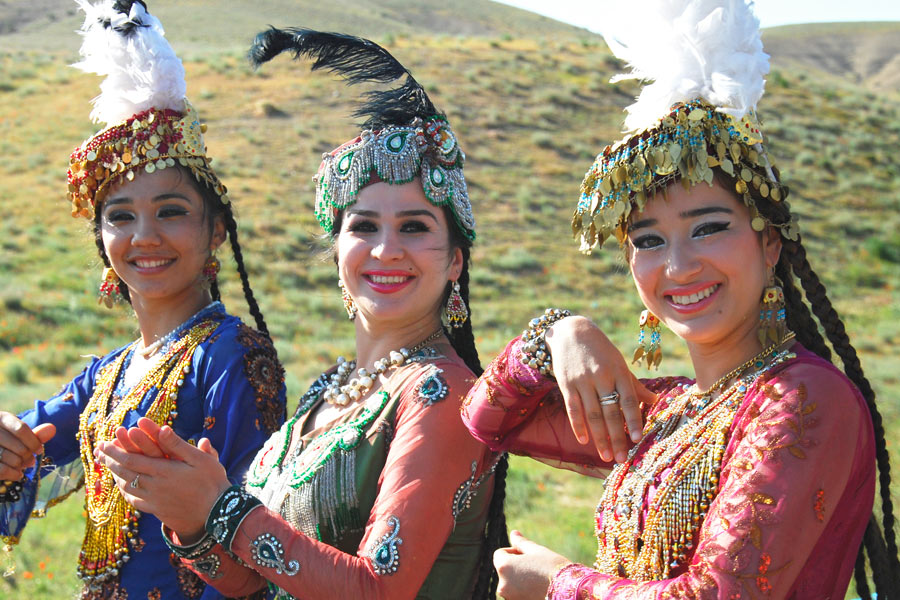
The Khorezm tradition of Uzbek dance is known for its vivid energy and expressiveness. Both the costumes and the meaning behind the movements reflect ancient roots, tracing back to Zoroastrian symbolism. These dances are known for raised hands directed toward the sun, bright colors, and costumes adorned with numerous round coins - all symbolizing sunlight. Their burning energy and rhythmic pulse echo an ancient reverence for the sun and flame.
The most famous dance of the Khorezm region is Lazgi, which has become a true symbol of Uzbekistan’s dance tradition. With a history spanning over a thousand years, Lazgi was inscribed on UNESCO’s Representative List of the Intangible Cultural Heritage of Humanity in 2019. It can be performed solo or by entire ensembles, either female or male. The solo female version is considered the most expressive, as it fully reveals the grace and richness of the tradition.
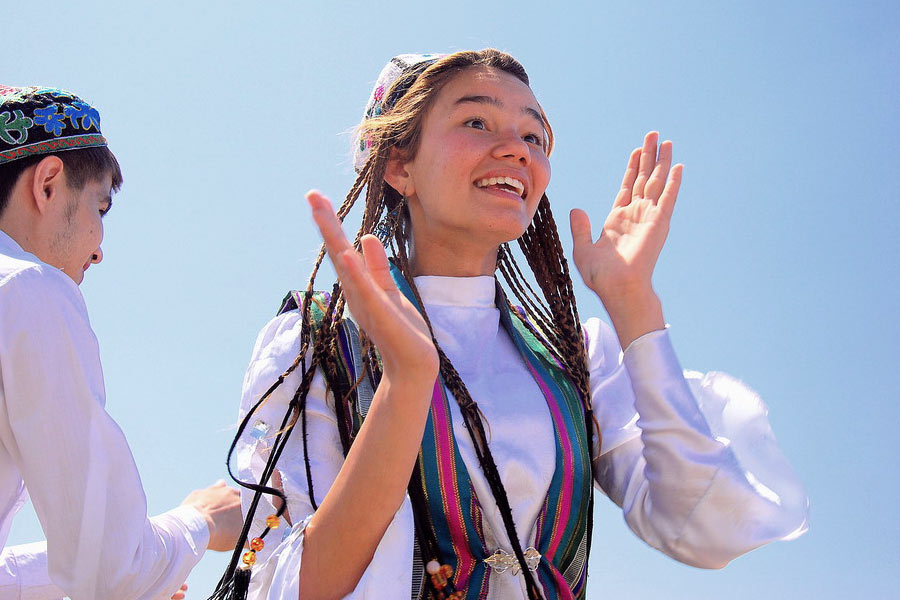
The word Lazgi means “shaking” or “shuddering” - and indeed, the entire dance is built on movements of this kind. Its choreography is often associated with a legend of the soul entering the body: beginning with the gradual awakening of the hands and arms, then the head, torso, and finally the whole body. As the performance unfolds, the music and rhythm intensify, building to fast, complex movements accompanied by the kayrak (castanets).
Lazgi became the foundation for the full-length production Lazgi – Dance of the Soul and Love, staged by choreographer Raoul Raymond Rebeck in 2021 at the Alisher Navoi Theater in Tashkent. The performance has since toured internationally - in Paris, Dortmund, Moscow, St. Petersburg, Istanbul, Dubai, and Beijing. Telling the thousand-year story of Lazgi through a symbolic journey of the characters Soul and Love, the production celebrates the uniqueness and beauty of Uzbek dance.

